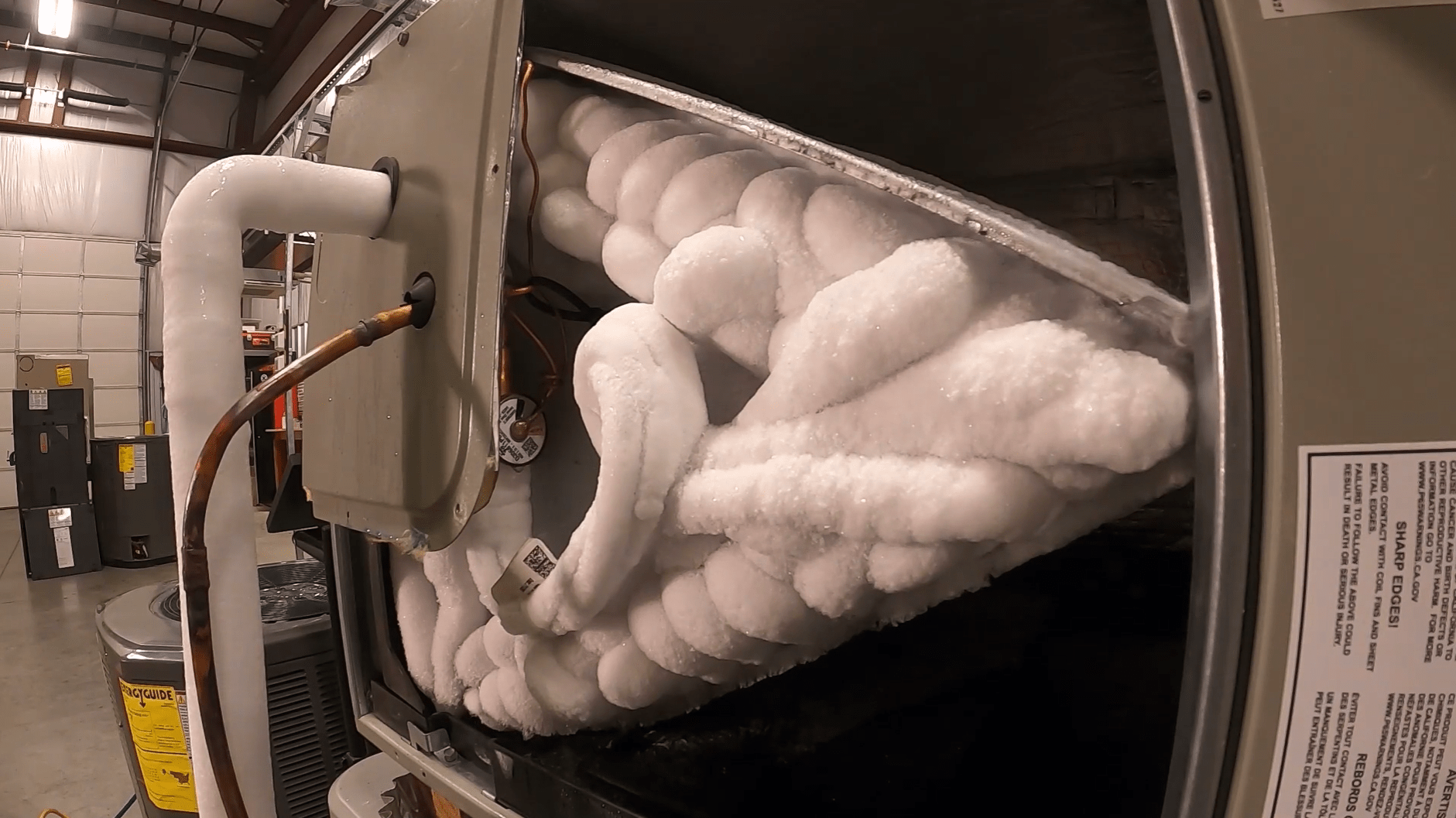Tips for Thawing a Frozen AC Pipe - Restoring Normal Functionality
Tips for Thawing a Frozen AC Pipe - Restoring Normal Functionality
Blog Article
We've stumbled on the article pertaining to What Causes AC Pipes To Freeze? down the page on the web and reckoned it made perfect sense to discuss it with you here.

Introduction
Finding that your AC pipe is iced up can be worrying, especially throughout hot summer months when you count on your a/c unit one of the most. Comprehending what to do in such a scenario is vital to prevent further damages to your cooling system and ensure your comfort inside your home.
Understanding the Causes
Several factors can add to the cold of an air conditioner pipeline. Understanding these reasons can assist you address the problem efficiently.
Absence of Airflow
One usual root cause of a frozen air conditioning pipeline is inadequate air movement. When the airflow over the evaporator coil is restricted, it can create the coil to drop below freezing temperature level, leading to ice formation on the pipe.
Reduced Refrigerant Levels
Inadequate cooling agent levels in your air conditioning system can additionally result in a frozen pipeline. Low refrigerant levels can create the pressure in the system to go down, bring about the cold of moisture on the evaporator coil.
Winter Conditions
In colder climates, freezing temperatures outside can contribute to the cold of air conditioning pipelines. If your air conditioning system is not appropriately insulated or if there are leaks in the ductwork, cold air can penetrate the system, triggering the pipeline to freeze.
Dirty Air Filters
Filthy or stopped up air filters can restrict air flow in your air conditioner system, bring about different concerns, consisting of a frozen pipeline. It's essential to replace or cleanse your air filterings system consistently to ensure proper air flow and stop ice build-up.
Indicators of a Frozen Air Conditioner Pipe
Recognizing the indicators of an icy air conditioner pipeline is critical for punctual activity.
Minimized Airflow
If you observe a considerable decrease in air movement from your vents, it can suggest a frozen pipeline.
Ice Buildup on the Pipe
Visible ice accumulation on the refrigerant line or the evaporator coil is a clear sign of a frozen AC pipeline.
Odd Sounds from the Unit
Unusual audios, such as hissing or gurgling, coming from your a/c unit can indicate that there's ice existing on the pipe.
Immediate Actions to Take
When confronted with a frozen air conditioner pipeline, it's vital to act swiftly to stop further damages to your cooling system.
Turning off the a/c
The first step is to shut off your a/c unit to stop the system from running and aggravating the concern.
Looking for Blockages
Evaluate the location around the interior device for any kind of blockages that might be obstructing air flow, such as furniture or curtains.
Thawing the Pipe
You can make use of mild techniques like placing towels taken in cozy water around the frozen pipe to aid thaw it gradually.
Preventive Measures
Taking preventive measures can aid prevent future occurrences of an icy air conditioning pipe.
Routine Maintenance Checks
Schedule normal maintenance checks with a specialist HVAC specialist to make certain that your air conditioning system is running successfully.
Changing Air Filters
Regularly replace or cleanse your air filters to stop airflow limitations and keep optimal efficiency.
Protecting Exposed Pipes
If your air conditioner pipes are subjected to cool temperatures, think about shielding them to prevent freezing during cold weather.
Looking For Professional Help
If DIY methods stop working to resolve the issue or if you're not sure regarding just how to continue, it's finest to look for support from a certified HVAC technician.
When DIY Methods Fail
If your attempts to thaw the pipeline or address various other concerns are unsuccessful, it's time to contact an expert.
Significance of Hiring a Professional HVAC Technician
A licensed HVAC technician has the knowledge and tools necessary to identify and repair concerns with your air conditioner system safely and efficiently.
Conclusion
Taking care of a frozen AC pipe can be a frustrating experience, however recognizing how to respond can assist lessen damages and recover convenience to your home. By understanding the causes, recognizing the signs, and taking prompt action, you can effectively address the issue and prevent future occurrences.
What to Do If Your AC Line Is Frozen
Make Sure All Supply and Return Air Vents Are Open
If you notice problems with airflow, the first thing you should do is check your supply and return vents. Supply vents distribute clean, conditioned air throughout your home. As this air becomes stale, it’s pulled into the return vent, where it’s reconditioned before being sent back out through the supply vent.
When these vents are closed, air won’t flow in the home. Before examining your AC, check the vents in every room and ensure they’re all open.
Check for a Dirty Air Filter
Another possible cause of limited airflow is a dirty air filter. Your air conditioner’s filters catch elements you don’t want to breathe in, such as dirt and dust. Over time, filters can become clogged, ultimately blocking air from flowing in and out. The lack of airflow can then cause the entire coil to freeze and will completely restrict any air from moving through it. The AC may need to be powered off for one to two days to allow the coil to thaw after replacing the filter to allow proper functioning of the unit. This debris can also accumulate on your AC’s evaporator coil, requiring a more serious repair. In general, air filters should be cleaned regularly (about every two weeks).
Assess Your Outdoor Unit
In addition to checking your AC, assessing the outdoor unit is a good idea. Also known as the condensing unit, it works with your interior unit to release heat outside. An issue with the outdoor unit can result in rising internal temperatures.
Overgrown Shrubs or Clogged Leaves
From leaves and twigs to shrubs and debris, there’s no shortage of outdoor elements that can accumulate around your condensing unit. When these elements get lodged inside the unit, they can block airflow. Fortunately, removing the blockage can solve the problem.
Sounds of a Broken Fan
Shrubs and leaves aren’t the only things that can impede your outdoor unit’s airflow. If the fan is broken, the unit won’t be able to properly get rid of heat — which means the internal temperature won’t go down. First, make sure the fan is spinning. If it is, check for the following sounds of a broken fan:
Buzzing Rattling Screeching Hissing Clicking Preventative Measures
Nobody wants to deal with a frozen AC line. In addition to causing problems with your air conditioner, they require professional repairs. On the bright side, there are preventative measures you can take to help ensure this issue doesn’t arise in the first place.
https://www.coopergreenteam.com/blog/what-to-do-if-ac-line-frozen

I have been very occupied with Why Is Ice On My Outside Air Conditione and I really hope you appreciated the new page. Enjoyed reading our write up? Please share it. Let another person check it out. Many thanks for your time. Come back soon.
Book-Now Report this page